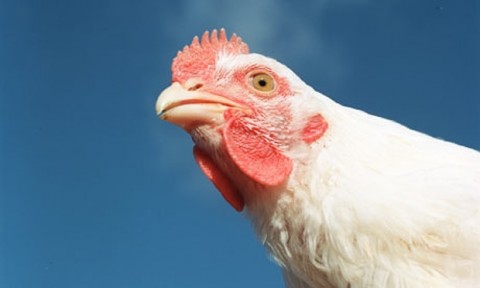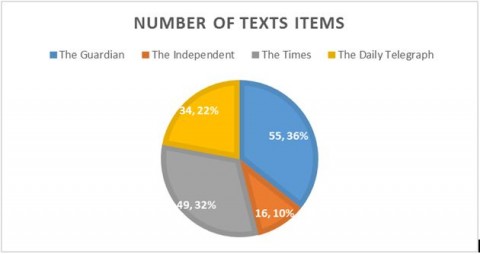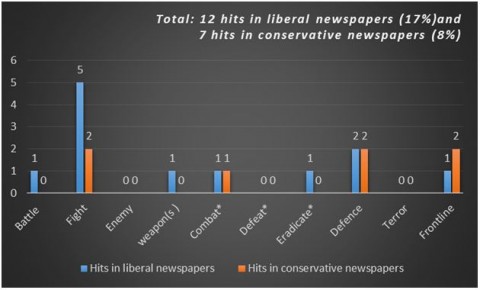Framing Zoonotic Diseases
I am a PhD student interested in the social construction and representation of chickens. In other words, what interests me is the way we talk (write) about chickens. While researching for my project, I came across lots of information on avian influenza, commonly referred to as avian or bird flu. Since the emergence of a highly pathogenic strain of avian influenza in 1996, the virus became a great concern for the welfare of chickens and humans. The risk of the mutation of the virus, so that it becomes transmissible from human to human by air and develops into a pandemic human disease, makes avian influenza a significant threat to public health. From 2003 the infection had spread widely through Asia and in 2005 it reached Africa and Europe, including the UK. In this blog I seek to briefly discuss the UK media frames avian influenza. But before moving towards the analysis of depictions of avian influenza in four British newspapers since the beginning of 2014 to present, I will provide a brief overview of the disease and previous research.
Avian influenza, its management and prevention by slaughtering have resulted in the death of at least 250 million birds worldwide. This number does not account for the recent outbreaks in the US. At the time of writing, October 2015, chicken meat and egg producers in the US are preparing for the return of highly virulent avian influenza virus that resulted in death of more than 48 000 million birds earlier this year. Concerning human health, between 2003 and July 2015 the number of human cases of avian influenza virus reported to the World Health Organization reached 844. Of these cases the number of deaths is 393. However, none of these deaths occurred in the UK. Considering the UK, between 2005 and 2015 there have been several bird flu outbreaks in the country. In 2007 there was an outbreak of highly pathogenic H5N1 in Upper Holton, Suffolk and East Anglia. The last outbreak was confirmed in Lancashire in July 2015 and resulted in a mass cull of 170,000 chickens and turkeys.
Portrait of a Chicken

From 2005 the attention given to bird flu by the UK media and academic community increased. The linguists Nerlich and Halliday analysed the coverage of avian influenza outbreak in British newspapers and scientific papers published in the beginning of 2005. The study shed a light on the ways scientific knowledge was communicated via mass media. It reported that in early 2005 scientists led a campaign of fear and warning that was “heated up” by journalists. Nerlich and Halliday noted that metaphors of natural disasters were extensively used in the depiction of avian flu. Comparing avian flu with storms, earthquakes or floods implied that alike in the case of natural disasters there was relatively low control of the disease. In a following study Nerlich noted a shift in perception, from the conceptualisation of the disease as a natural disaster to a war. The war metaphors became more prevalent in the discourse towards the end of 2005 when the avian influenza virus reached Europe and the threat increased. Nerlich suggested that the closer virus gets, the more military metaphors are deployed. Moreover, military metaphors invoke military response to the disease, which is this case is mass slaughter of animals.
As the threat of pandemic avian influenza remains and metaphors seem to be able perpetuate cultural imagination, I decided to search for military metaphors in the recent media depictions of avian influenza. I analysed four representative British newspapers from 1st of January 2014 until the time of writing (09 Oct 2015) to provide a snapshot of the discourse surrounding the virus. Namely, The Guardian (liberal), The Independent (liberal), The Times (conservative) and The Daily Mail (conservative) were selected due to their popularity and socio-political ideologies (see figure 1). Newspaper items were downloaded via the LexisNexis Academic database (www.lexisnexis.com) using the “United Kingdom newspapers” option.
Using LexisNexis I searched the newspapers for terms “avian influenza” or “bird flu” to access relevant material. The search returned 154 hits. I downloaded the corpus (122 903 word tokens) and further analysed it with freeware Antconc (www.laurenceanthony.net/software.html). Searches for 10 war related keywords, namely battle, fight, enemy, weapon(s), combat(any suffix), defeat(any suffix), eradicate* (any suffix), defence, terror, frontline (front-line, front line) were carried out (see figure 2).
Figure 1 Number of text items in newspapers.
Figure 2 Occurrence of war related words.
The war related words occurred in the following concordances:
Battle:
• Synthetic biology promises to take the battle to the next level: to move beyond tinkering with this or that resistance gene, say, and to enable full-scale engineering and design of life. (TG)
Fight:
• Honeysuckle tea has been drunk for centuries in China to help fight flu, but the study provides the first scientific evidence to support the tradition, researchers said. (TDT)
• Sniff of hope in fight against flu. (TT)
• Ministers have been privately considering plans to cut back on health inspections to fight avian flu, as well as a swath of other animal welfare and farm inspections, even though a new bird flu strain has been found in the UK and is considered to pose a significant risk to the poultry sector. (TG)
• Doctors believe Tamiflu could relieve flu symptoms and help the body to fight the virus. (TG)
• But with the arrival of genetic manipulation in the 1970s, nature was no longer an inscrutable menace warded off with trial-and-error potions: we could fight back at the genetic level. (TG)
• 'Absolutely crazy': top scientists' verdict on recreation of flu virus that killed 50 million: Scientists mutated virus to make it more dangerous: Researchers say work will help fight future outbreaks. (TG)
• "Drugs needed to fight a threatened bird flu pandemic will not be available for at least a year, leaving Britons dangerously exposed to the potentially lethal virus," wrote the Mail. (TI)
Weapon(s):
• Fast diagnosis and good sanitation are our best weapons in the uneven fight against a rapid outbreak of disease. (TG)
Combat*:
• Researchers hail advances towards 'Holy Grail' vaccine able to combat flu strains. (TDT)
• Other researchers have challenged the claims of the Wisconsin team that their work is the only way to find out how to combat a lethal flu outbreak effectively, and that the experiments were deemed necessary and safe by experts. (TG)
Eradicate*:
• This data is now used to track and visualise disease spread and identify ways to contain and eradicate it. (TG)
Defence:
• We anticipate our novel preventative approach being used as a frontline defence against new pandemic strains before an effective vaccine is developed. (TT)
• And yet this drug is not only on the market, it's been actively stockpiled by the NHS as a front-line defence against flu pandemics. (TDT)
• The argument is that if you have a flu outbreak, you could raise general levels of defence. (TG)
• Later, Donaldson maintained it was Britain's best defence, but, he said: "It doesn't cure flu; it simply reduces the severity of the attack." (TG)
Frontline (front-line/ front line):
• We anticipate our novel preventative approach being used as a frontline defence against new pandemic strains before an effective vaccine is developed. (TT)
• And yet this drug is not only on the market, it's been actively stockpiled by the NHS as a front-line defence against flu pandemics. (TDT)
• Farrar is hardly going to forget front-line health workers - because he has been one. TI
Antiviral drug Tamiflu.
While my mini-research has vast limitations in regards to the time-frame, number of newspapers and number of keywords analysed, it is clear that militant metaphors did not permeate the discourse around bird flu in these particular newspapers during the timeframe specified. In addition, there is a fine line between metaphorical and literal. In at least some of the instances we see almost literal use of “fight” and the word “eradicate” here is not used in an aggressive militant way. However, war-related words were more frequent in liberal newspapers compared to conservative newspapers (18% to 7%). Perhaps the liberal press used such rhetoric in an attempt to legitimise animal killing, whereas the conservative press did not feel such a need as it may be less likely to mind animals being killed as a part of “disease control”. Another explanation for the discrepancy found between liberal and conservative newspapers could be general differences in rhetoric and stylistics between the left and right press and/or these particular newspapers. Nonetheless, these remain speculations and require further research.
The use of military metaphors was not only low, but also in instances where they were deployed, “the war was declared” to the virus or infection rather than birds carrying it. This could suggest a change in attitudes towards avian influenza. It could be that avian influenza is currently seen as a manageable and less dangerous as no human cases were confirmed in the UK. It could also indicate the remaining uncertainty about avian influenza, its danger to humans and the pandemic events, which are somewhat “waiting to happen”. Also, possibly war metaphors operate differently depending on the species of animal and how 'visible' the animal/war is. Chickens are massively slaughtered everyday behind the closed doors. 919 million chickens were slaughtered for meat in 2012 according to the official Food and Agriculture Organisation statistics. Could that suggest that killing thousands more due to disease control is seen as 'normal'? While I cannot answer these questions due space and time limitations, by writing this blog I intended to give some food for thought and draw the attention to the ways zoonotic diseases are framed by media. Metaphors evoke cognitive and cultural effects and may dictate potential solutions to a problem. As noted by Nerlich, they “are taken as ‘truths’”.
Follow us
Keep up to date with the latest project news via our Twitter feed.
- — 5 years 8 months ago
- — 6 years 5 months ago
- — 6 years 6 months ago
- — 6 years 7 months ago




 ChickenCoop
ChickenCoop